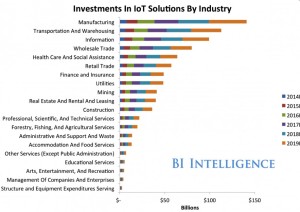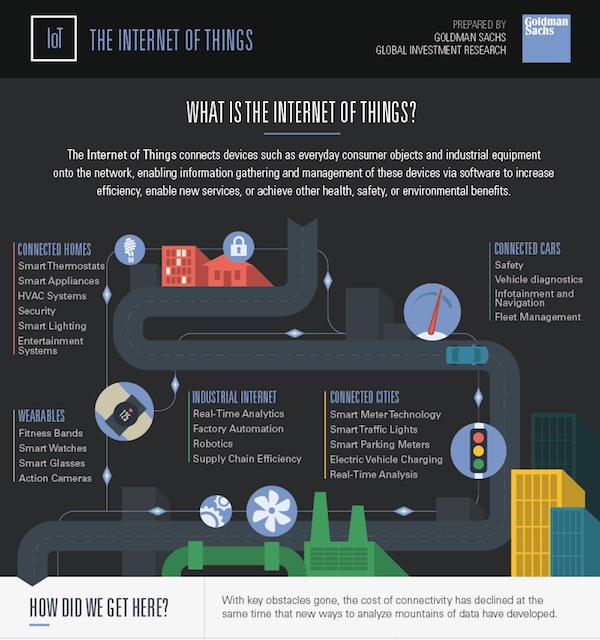Here are a list of online resources our faculty members have found helpful. Most are free. Feel free to add your favorites by posting a reply with the name and web address.
- screen cast-o-matic for lecture capture.
- Khan Academy is a great resource for free videos.
- Live scribe pens are a great inexpensive tool.
- Soft chalk for enhanced interaction.
- Wordle – http://www.wordle.net
- Xtranormal – www.xtranormal.com
- Periodic Table of Videos: http://www.periodicvideos.com
- Google – http://www.google.com/edu/teachers/
- Jing http://www.techsmith.com/jing.html
- Screenr http://www.screenr.com/
- Livemocha –language www.livemocha.com
Help
- Piazza www.piazza.com
- Open Study – openstudy.com
- Free technology for Teachers http://www.freetech4teachers.com/
- Discovery education – http://web2010.discoveryeducation.com/web20tools.cfm
- Edudemic.com – http://edudemic.com/2010/07/the-35-best-web-2-0-classroom-tools-chosen-by-you/
Open educational resources (OER) are “digitized materials offered freely and openly for educators, students and self-learners to use and reuse for teaching, learning and research.”
OER include different kinds of digital assets. Learning content includes courses, course materials, content modules, learning objects, collections, and journals. Tools include software that supports the creation, delivery, use and improvement of open learning content, searching and organization of content, content and learning management systems, content development tools, and on-line learning communities. Implementation resources include intellectual property licenses that govern open publishing of materials, design-principles, and localization of content. They also include materials on best practices such as stories, publication, techniques, methods, processes, incentives, and distribution.
Open Educational Resources websites:
- http://florida.theorangegrove.org
- http://oerconsortium.org/
- http://www.archive.org/details/education
- http://openeducation.zunia.org/
- http://opencourselibrary.org
- http://www.aascu.org/programs/redballoon/
- https://openeducationalresources.pbworks.com/w/page/24836860/What-are-Open-Educational-Resources
MERLOT- Multimedia Educational Resources for Learning and Online Teaching at www.merlot.org
http://www.advantageedu.com/blog/2008/100-open-courseware-resources-for-teachers/
National Repository for Online Courses content and in house materials — http://www.montereyinstitute.org/nroc/
The California State University system has been implementing a “Affordable Learning Solutions” initiative for about a year. They have organized many open learning resources into a “one-stop shop” that is open to everyone – see http://als.csuprojects.org
CSU have built some simple applications where a faculty or student can type in the ISBN of their textbook and “OER Finder” will provide a list of open learning resources associated with the topic of the textbook see http://als.csuprojects.org/course_content or if you only want to find open textbooks (vs. course modules, online courses, etc), use the OER Finder at http://als.csuprojects.org/free-textbooks . The Affordable Learning Solutions and the OER Finder is built on the long term success of MERLOT (www.merlot.org) – an open online library of over 27,000 open learning resources, many of which have been peer reviewed by academic editorial boards.
CSU has started having faculty share their course syllabi that illustrates how they are substitute open learning resources for textbooks (see http://als.csuprojects.org/sharing-practices for some initial samples.
The CSU also has tested the strategy of licensing digital textbooks (“Renting Digital”) at a significantly lower cost (35% of new textbook price for the pilot studies). You can read about the CSU’s Digital Marketplace project at www.dmproject.org and the “licensed content” project at: http://www.dmproject.org/solutions/licensed_content.html and the Digital Marketplace 2010 year-end report http://www.dmproject.org/docs/2010-YearEndReport.pdf
http://hosted.mediasite.com/mediasite/Catalog/pages/catalog.aspx?catalogId=68c4ce9f-c919-45ea-b18b-0f5aa7501fbd presentation on the open future and the speaker is Dr. David Wiley. While not totally open there is a large FIPSE Grant that was given to Florida State College in Jacksonville. They have a project called SIRIUS Academics which provides low cost course contents and books on several courses with more in the works. Person to contact if you are interested is Rick Granger: lgranger@fscj.edu phone: 904-632-3307. Also you may contact Leslie Balsiger for materials that she has on this topic lbalsiger@lccc.wy.edu
Going hybrid
For those faculty in our member colleges who are thinking about creating hybrid courses, here are some great resources. Most are from the University of Wisconsin – Madison.
Five Frustrations: Lessons for Higher Ed After An Awful Car Rental Experience
…So you may be asking why a story about a rental car company is in an academic journal. Last week, I reserved a car and the series of events and exchanges reminded me of some of the same issues students face when interacting with their colleges and universities. As a former VP for Enrollment Management, I am keenly aware of the institutional goal to create a lifetime of loyalty: from prospect to student to alumni. The impact of the poor use of technology throughout a lifetime of engagements can severely damage this loyalty. What follows is a comparison of my experience with Enterprise to a student’s experience with an institution.
Read the rest of my latest article published in The EvoLLLution! by clicking here
The next era in the advancement of the Internet is called the Internet of Things (IoT). Aptly named, the Internet of Things includes all of the devices and services that are now connected to the Internet, like your phone, iPad, computer, FitBit, television, coffee maker….
The number things that are in design and production that will be connected in the near future is growing at an exponential rate. The attached infograph from Goldman Sachs does a great job of explaining IoT and the growth in the future (see the complete infographic on their website).
So I came up with some variations for Higher Education:
IoWHNDITWB – Internet of We Have Never Done It That Way Before
IoTN – Internet of Tenure – No
IoAA – Internet of Antiquated Accreditation
IoSMTSTF – Internet of Students Are More Tech Savvy Than Faculty
IoYCTTO – Internet of You Can’t Teach That Online
IoPOH – Internet of Physical Office Hours
IoNOTT – Internet of Not Offered This Term
Enough for now… Add your own below.
The United States educational system has fallen on the many lists ranking success and performance over the years. Given that trend, would you be surprised if I told you that education ranks pretty low on the scale of investing in the Internet of Things (IoT)? Spoiler alert, we are not at the bottom, but pretty close.
 While the transportation and warehousing, manufacturing and information industries are each investing over $100 billion over the next six years, the education sector barely makes a blip on the chart.
While the transportation and warehousing, manufacturing and information industries are each investing over $100 billion over the next six years, the education sector barely makes a blip on the chart.
Mining, construction, fishing and food service are banking on a connected world. Once again, education is failing and this lack of investment not only puts us behind today, but also will have lasting ramifications for the future.
For the last four years I have made the annual pilgrimage to the Consumer Electronics Show in Las Vegas in search of the latest technology that could change the way we teach and our students learn. This year, however, I opted to avoid the other 200,000 or so people and watch the events online.
 Samsung just announced that by 2017, 90 percent of all of its devices sold would be Internet-enabled. This is a big statement considering Samsung sold over 665 million products last year. If that’s not enough, the platform will be open, allowing developers to build other compatible software and hardware to interact with those devices.
Samsung just announced that by 2017, 90 percent of all of its devices sold would be Internet-enabled. This is a big statement considering Samsung sold over 665 million products last year. If that’s not enough, the platform will be open, allowing developers to build other compatible software and hardware to interact with those devices.
Imagine if a university announced that by 2017 all of its faculty would be Internet-enabled. Just crazy talk.
 I read recently an article in USA Today describing how the Iowa Department of Transportation shut down a weekend of Tesla test-drives in Des Moines. For those of you that are not familiar with Tesla, the company is revolutionizing the auto industry through the development of an electric car that is capable of going over 300 miles on a single charge and performs like a high-end sports car. Another key difference in how Tesla is revolutionizing the auto industry is how their customers buy their cars. Instead of using costly dealerships, Tesla sells directly to customers online or at one of their store locations in upscale malls across America.
I read recently an article in USA Today describing how the Iowa Department of Transportation shut down a weekend of Tesla test-drives in Des Moines. For those of you that are not familiar with Tesla, the company is revolutionizing the auto industry through the development of an electric car that is capable of going over 300 miles on a single charge and performs like a high-end sports car. Another key difference in how Tesla is revolutionizing the auto industry is how their customers buy their cars. Instead of using costly dealerships, Tesla sells directly to customers online or at one of their store locations in upscale malls across America.
So why did the Iowa Department of Transportation stop Tesla’s test-drives in Des Moines?
Two reasons: 1) Iowa does not allow automakers to sell directly to the public and 2) Tesla is not a licensed dealer in Iowa. The state of Iowa considers test-drives as a “dealer activity.”
And who ratted Tesla out? The Iowa Automobile Dealers Association.
This reminds me of higher education. Instead of the dealers adapting to the changing marketplace and working with the automakers to build similar cars to compete with Tesla, they are simply using arcane and outdated laws to limit an innovative alternative to traditional car options.
Higher education has relied on the Department of Education and regional accreditors to limit competition under the auspices of ensuring quality education. However, they truly cannot measure quality and are simply relying on the old system to protect the status quo. Like the Iowa Department of Transportation, the entities that oversee higher education believe they are protecting the consumer (student), however their over-protection is forcing innovators to find a “work-around.”
In a previous post, I discussed how Uber, the online rideshare company, is disrupting the traditional taxi industry. As promised, here is my plan for how to truly disrupt the traditional higher education industry in the United States.
First, the entities that control the institutions must be neutralized. In the taxi industry, it was the local and state governance of the taxi drivers and companies. For education, that is the Department of Education and Accreditors. Sure, you might say, that is no easy task to make the DOE and Accreditors no longer relevant. I tell you, it is quite simple; and here is how.
The DOE controls the money through Title IV funding and the accreditors are a gateway to the money. Furthermore, accreditors provide some artificial seal of approval as to the quality of a program, thus allowing transferability among institutions and access to advanced degrees. So, take away the money and much of the power disappears.
Those of us in higher education know the reliance on Title IV funding is unhealthy and has caused the price of education to outpace most other industries several fold. But how do institutions drop their dependence on the new social welfare of Title IV funding? I don’t think most can. That is why we need new institutions. And those new institutions must initially come from corporate training programs.

Diploma from Hamburger University
Hold on! Here is where the conversation gets wild. Take Hamburger University, the McDonalds training program based outside of Chicago. Each year over 7,500 students attend Hamburger University and receive training that is ACE evaluated for transfer into traditional academic programs. It would not take much for McDonalds to offer enough general education requirements allowing students to earn a degree. But would the Higher Learning Commission allow McDonalds to become “an accredited institution” without jumping through years of costly self-study and bureaucratic BS?
Nope. But in my model, they would not need to.
Why? They are self-sustaining through funds from the corporation. They don’t need access to Title IV funds.
The last hurdle of non-regionally accredited universities is for their graduates to continue their education. Right now, several regionally accredited institutions will allow non-accredited and nationally accredited Bachelor degree graduates to enroll and pursue a Master’s degree. Pressure to compete will bring hundreds more willing to accept our graduates from this alternative model. While some might laugh and discredit the McDegree, I bet you a big Mac you won’t be laughing in the future.
 San Francisco’s cab ridership is down by 65% in the last 15 months, according to a report by San Francisco Municipal Transportation Agency. Why? They claim companies like Uber and Lyft that provide an app-dispatched ride service have changed the for-hire transportation industry. For anyone that has used Uber, you know it is so much better than a traditional taxi service.
San Francisco’s cab ridership is down by 65% in the last 15 months, according to a report by San Francisco Municipal Transportation Agency. Why? They claim companies like Uber and Lyft that provide an app-dispatched ride service have changed the for-hire transportation industry. For anyone that has used Uber, you know it is so much better than a traditional taxi service.
What has been the cab operators’ response? They have asked the government agency that regulates taxis to step in and stifle the expansion of the ride share companies. And the agency’s response is requiring the cabs to act more like ride share companies, forcing them to use app-based hailing and electronic payment. Additionally, the agencies are trying to bring the regulation of the ride-share programs under their purview and control.
The difference is market demand. In Virginia, the State Department of Transportation gave Uber and Lyft a cease and desist ultimatum, but the riders kept using them. The advantage of ride-share operators is that they simply say they do not operate a for-hire transportation service, but simply facilitate the sharing of rides between individuals, for a small fee of course. Virginia finally dropped the cease order, much to the taxicab owners’ dismay.
The cab owners should be mad. For years they have been under the control of the government agencies that imposed strict rules and made compliance mandatory through threats of pulling their medallions, basically their license to operate. Yet these agencies, charged with ultimately protecting the consumers, really didn’t do much to ensure your cab ride was high quality.
Wow, this sounds a lot like higher education…
Institutions are accredited by a regional or national accrediting body, licensed or approved in their particular state, subject to the demands of the Department of Education with the threat of removal of Title IV funds (student loans and grants) and a myriad of other specialized accrediting bodies. Yet, all of these overseeing agencies who ultimately tout ensuring quality education, have done very little to actually ensure quality. The MOOC movement, while many hoped would be the Uber of the higher education industry, simply could not gain the market demand to overthrow the current system.
However, always the disruptive optimist, I do believe there is a way to Uberize the higher education industry in the United States. I will share the secret in next week’s blog.
image courtesy Uber.com
 I read a blog by Craig Ballantyne about politically incorrect time management strategies to be productive. As the CEO of an online consortium of colleges where 75% of the staff works remotely, we communicate A LOT via email. Last year after reading Tim Ferriss’ 4-Hour Work Week, I implemented an email management strategy he has used for years; I only check my emails at noon and 4:00 PM. I sent an email to my staff upon my implementation of this new system stating my intention to check emails on the above schedule. I also clarified that they are fully empowered to make any decision that costs less than $500. For those financial decisions that range between $501 – $1,000, they should consult another team member for their opinion and just do it. So many emails were for approval for items they should have the authority to carryout. As always, I would be available via phone if they needed me.
I read a blog by Craig Ballantyne about politically incorrect time management strategies to be productive. As the CEO of an online consortium of colleges where 75% of the staff works remotely, we communicate A LOT via email. Last year after reading Tim Ferriss’ 4-Hour Work Week, I implemented an email management strategy he has used for years; I only check my emails at noon and 4:00 PM. I sent an email to my staff upon my implementation of this new system stating my intention to check emails on the above schedule. I also clarified that they are fully empowered to make any decision that costs less than $500. For those financial decisions that range between $501 – $1,000, they should consult another team member for their opinion and just do it. So many emails were for approval for items they should have the authority to carryout. As always, I would be available via phone if they needed me.
On my first day under the new plan, I checked emails at noon and 5:30. It took me a combined total of eleven minutes to review all of the emails for the day and answer those that needed my attention. The next day it took 8 minutes. It is amazing how many of the issues resolved themselves without my input. Normally, I would have my Outlook open on my desktop and would immediately look over or even switch over whenever I heard the chime of a new message. This wasted hours of my day.
So given Craig’s blog and Tim’s book, here are my strategies for a college student to manage their time HARD-CORE:
- Turn your phone’s ringer off (no vibrate either). In a connected society, our phones provide us with distractions like texts, email, Facebook, Twitter and the occasional phone call. The majority does not require immediate attention or response.
- Check phone, email and other forms of social media four times per day: morning before class or work, at lunch, at dinner and before you go to bed. You will be amazed at the time you have just freed up.
- Make study time a sacrosanct event. Set a time and do not let distractions interfere with this time.
- Schedule fun. All work and no play is no way to go. College is a great time to have fun and discover who you are.
- Make a schedule and stick to it. Use a planner that you keep with you at all times, this can be electronic or good ole paper. Review your plans for the upcoming week on Sunday.
- Only have one planner or system, multiple systems don’t work.
- Be realistic with your schedule. If you are not a morning person, don’t schedule an 8:00 AM class.



